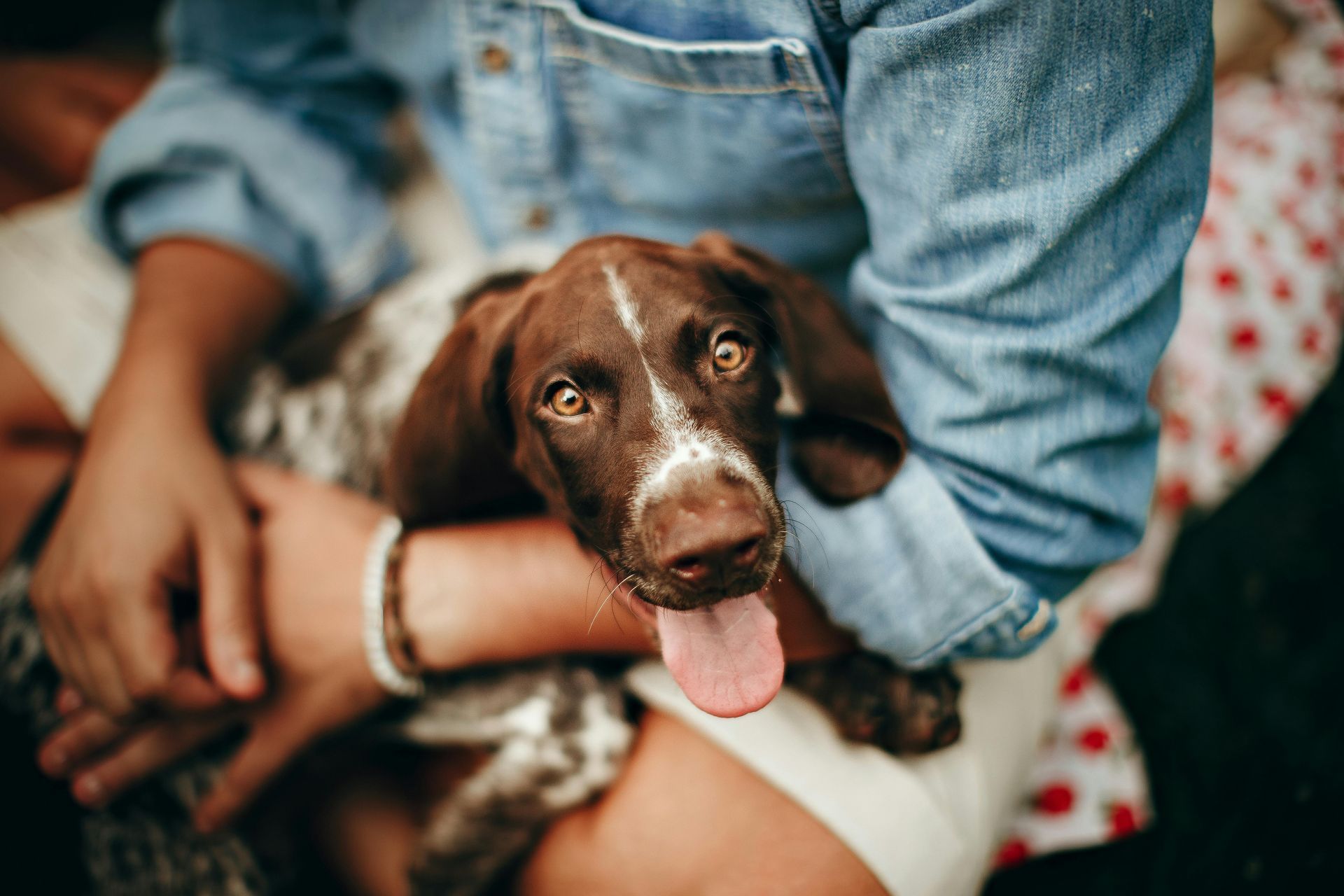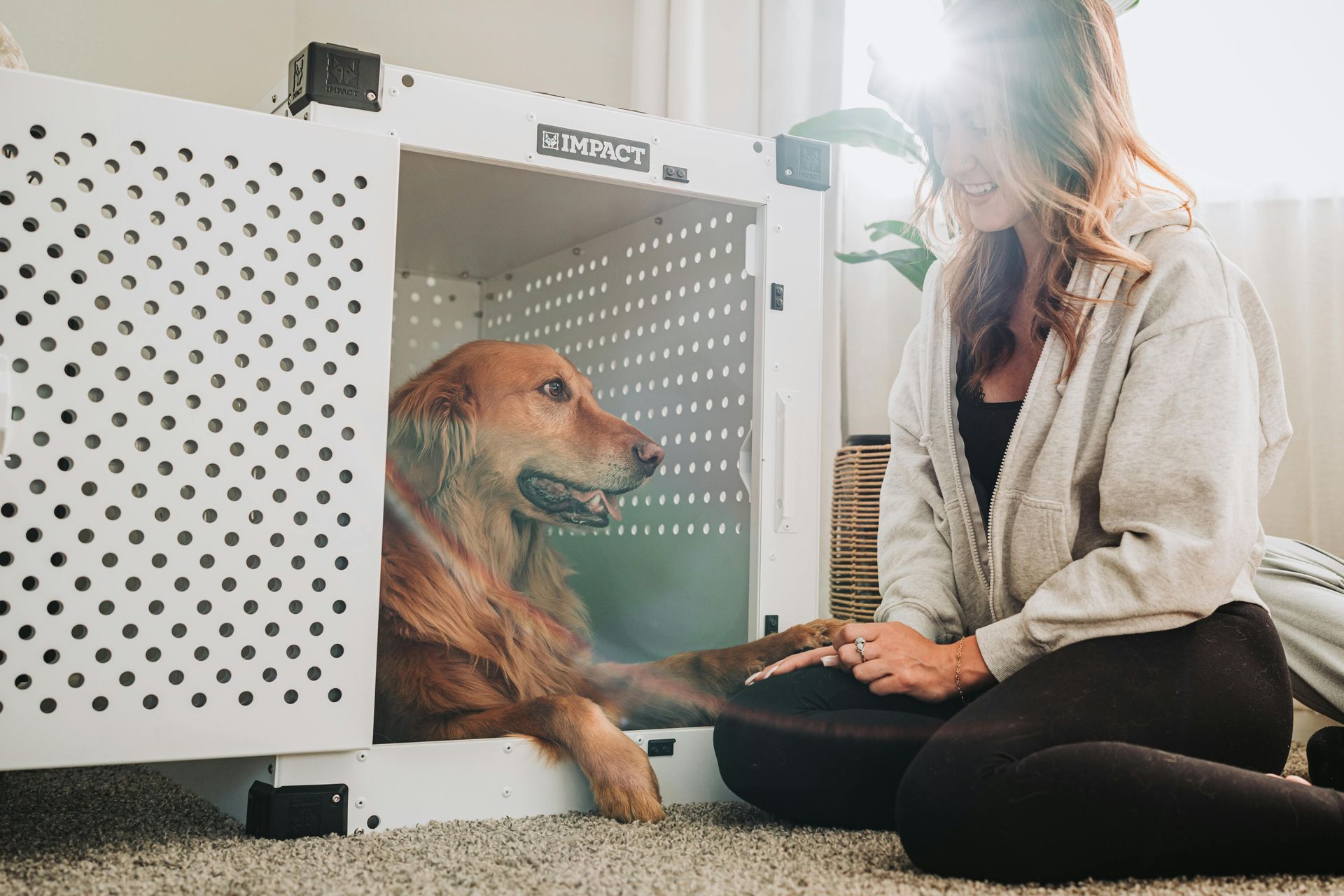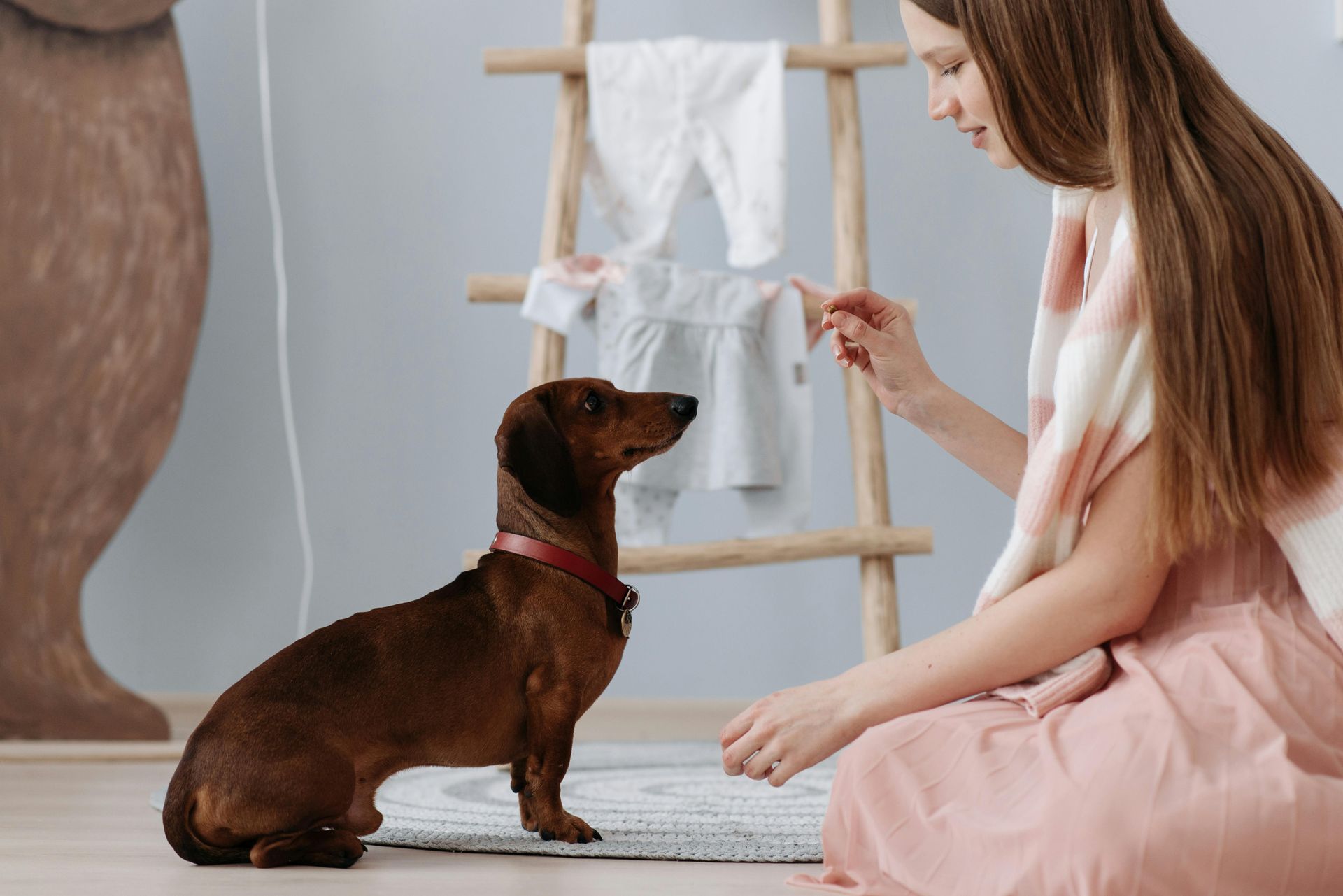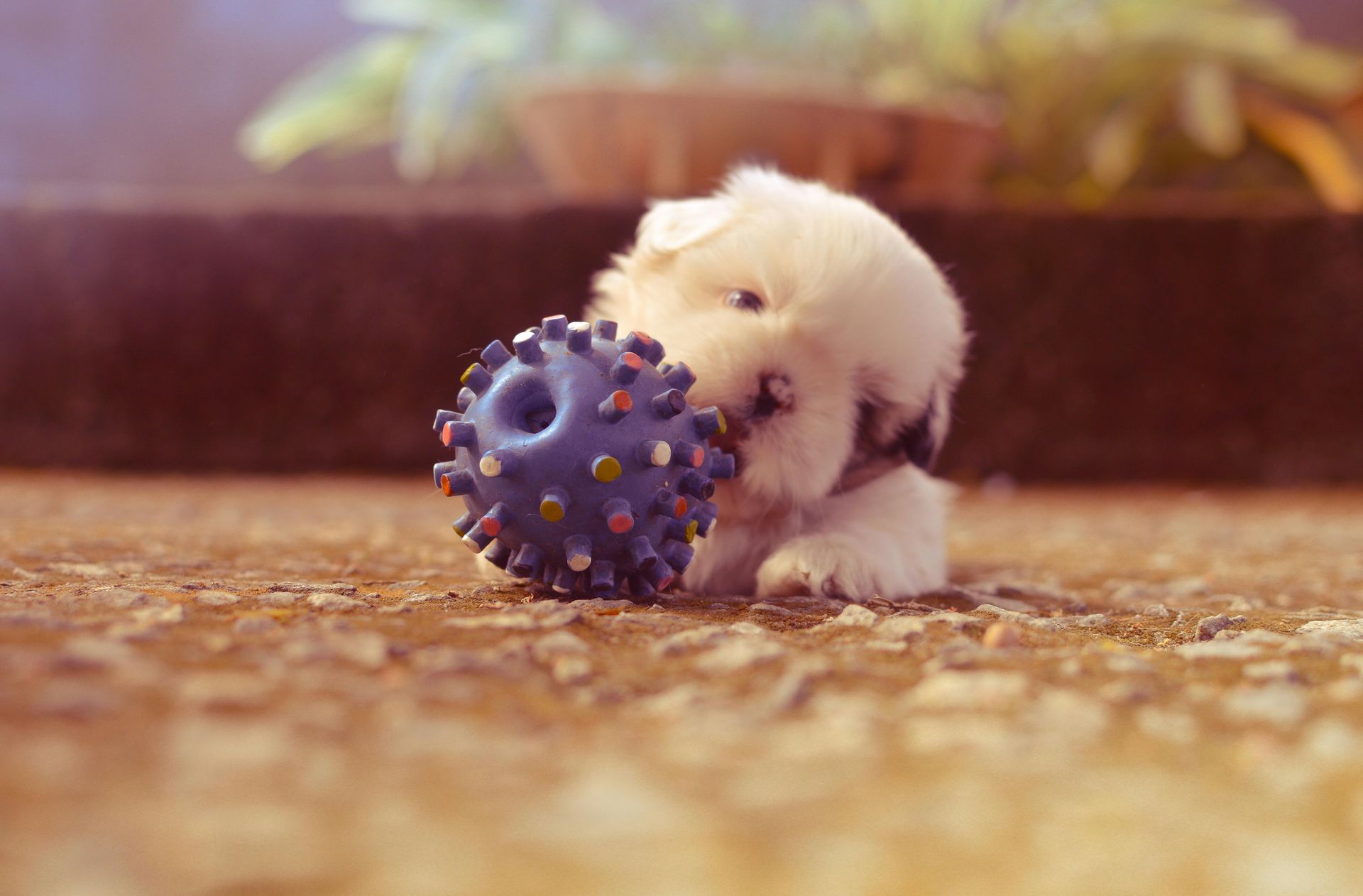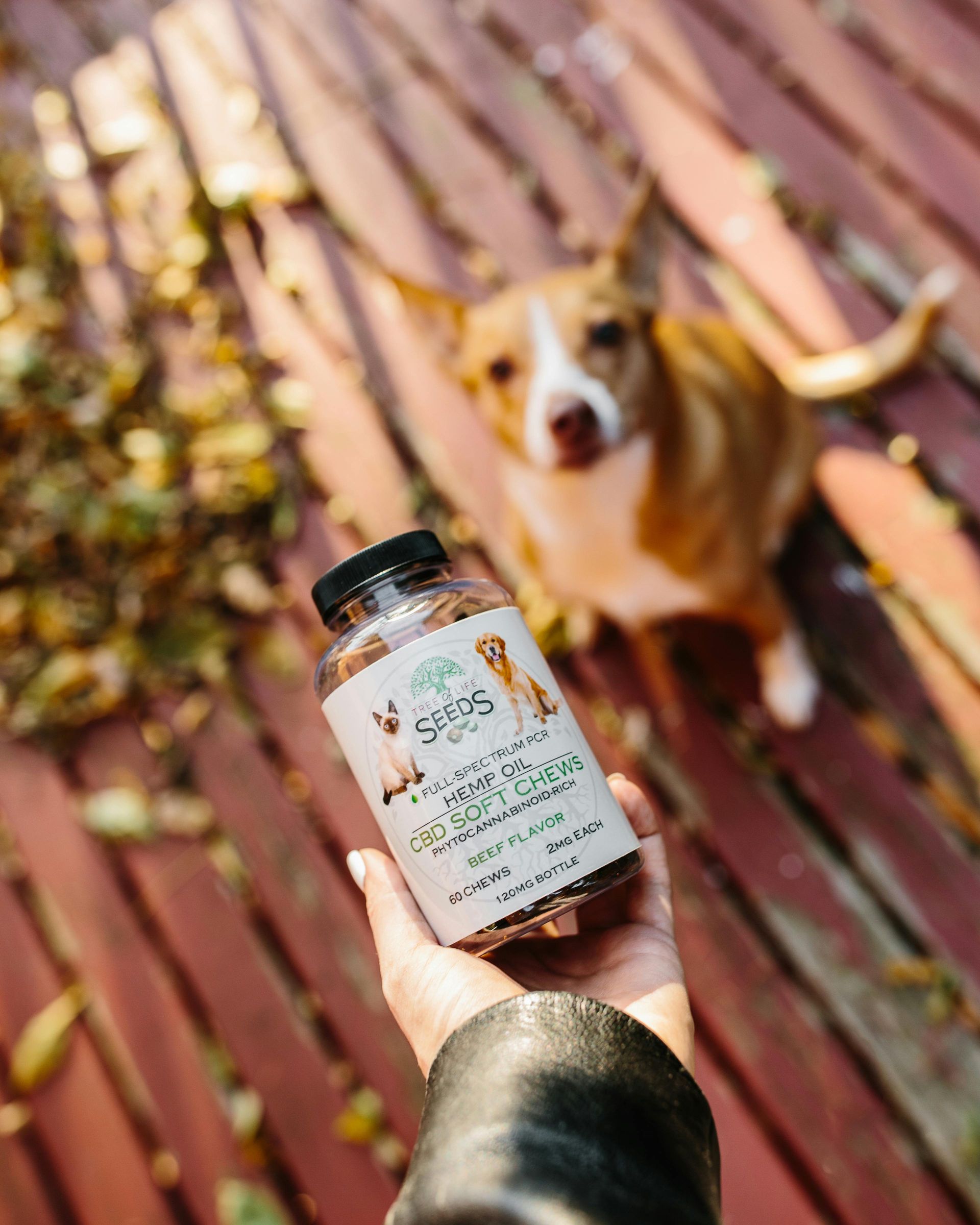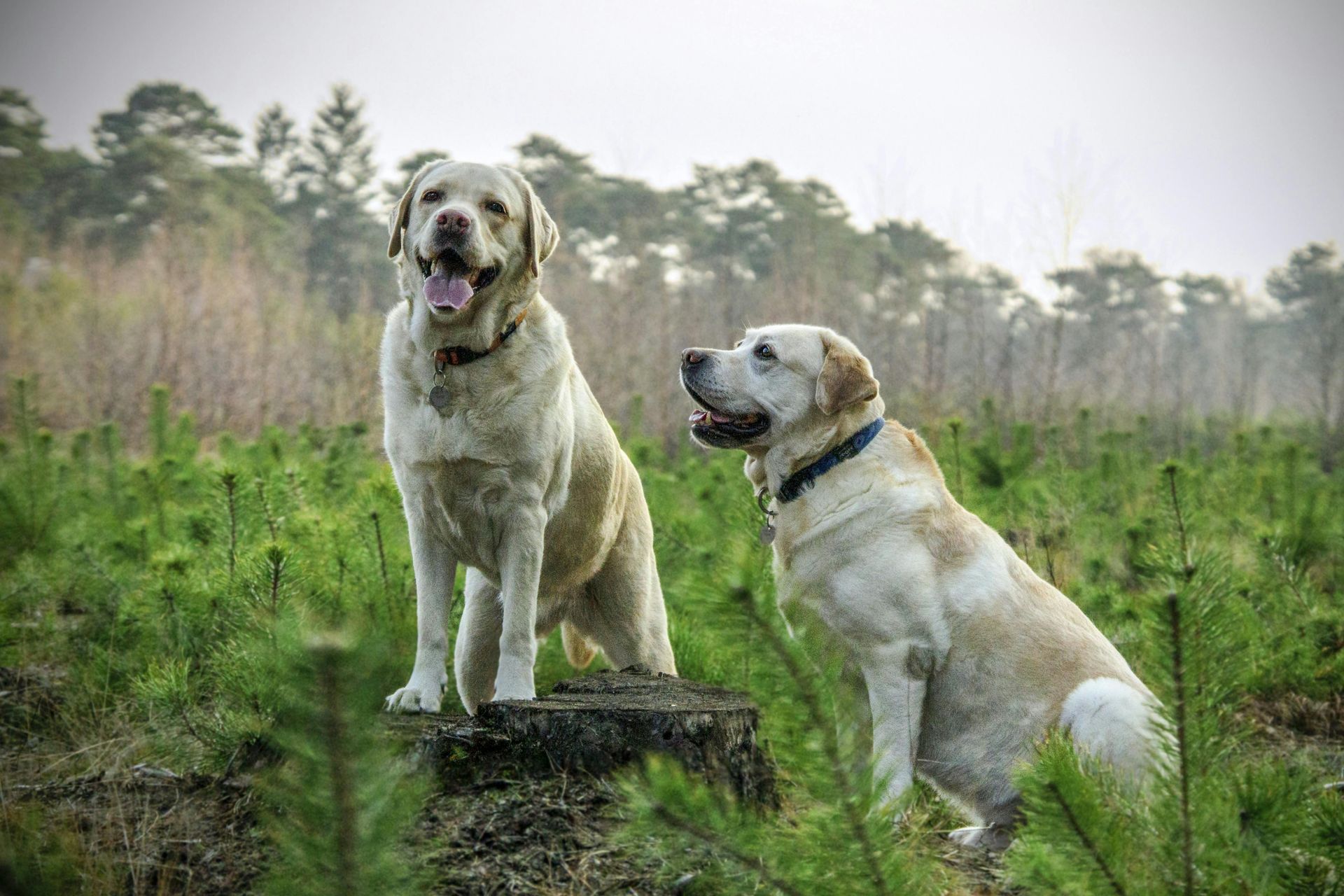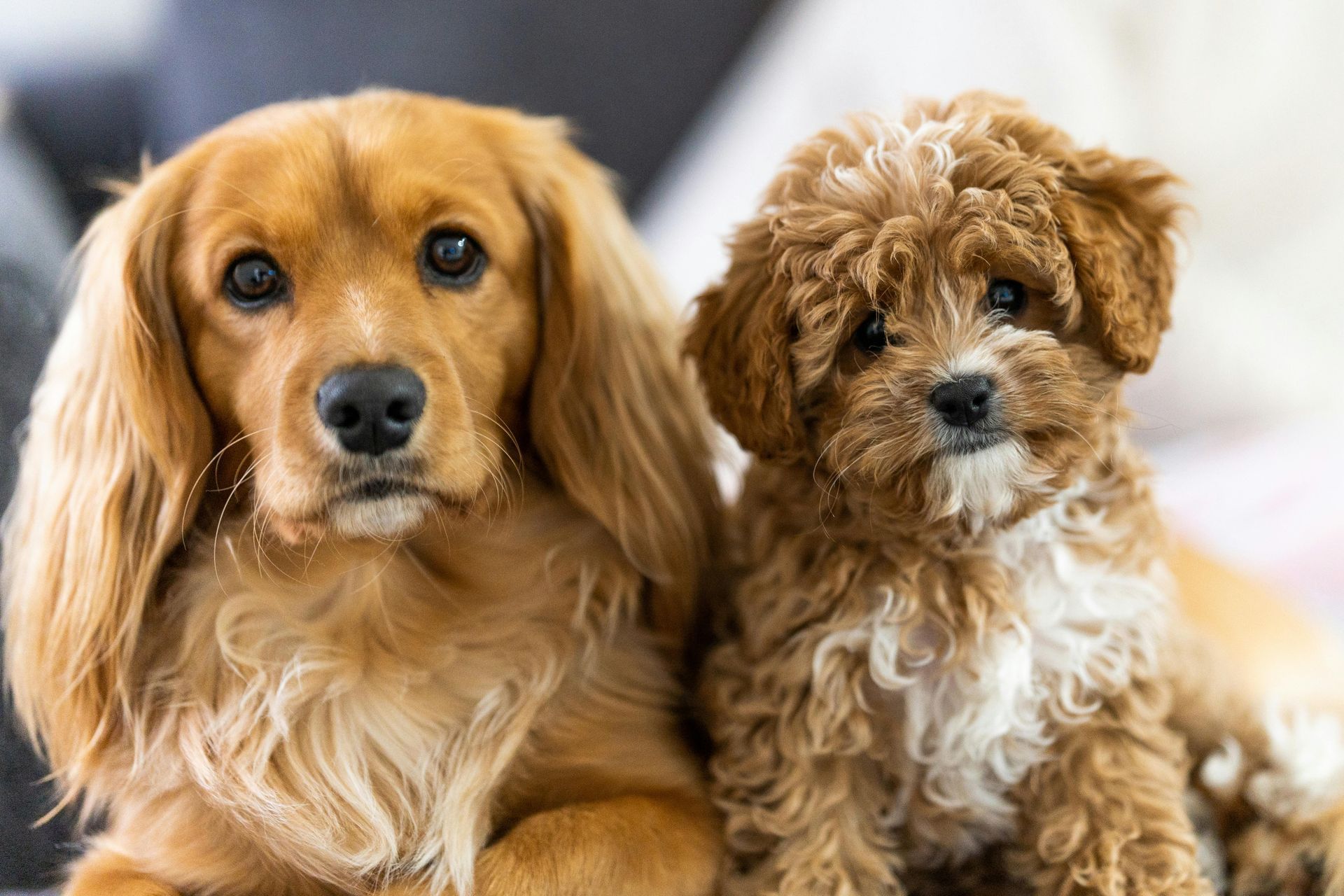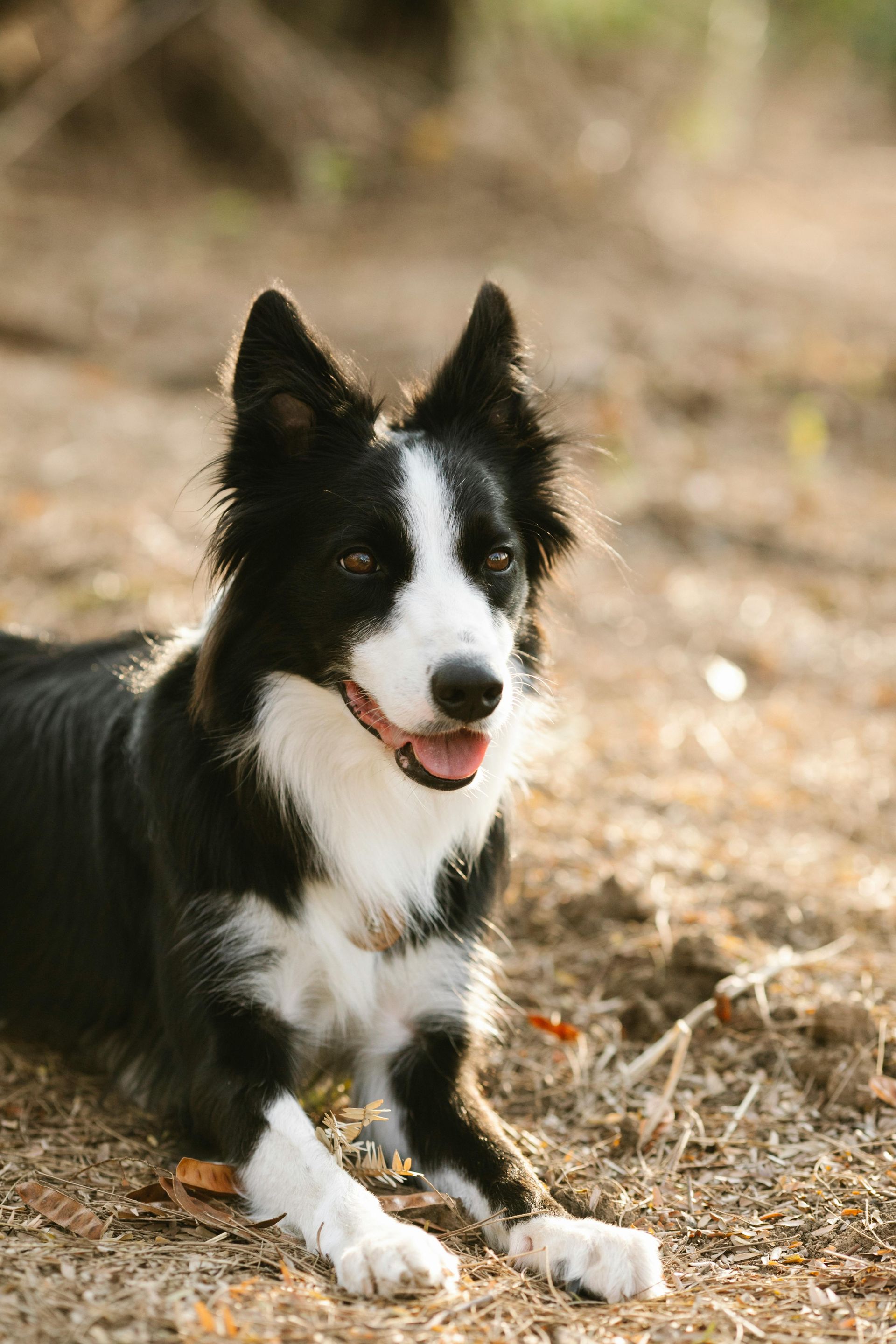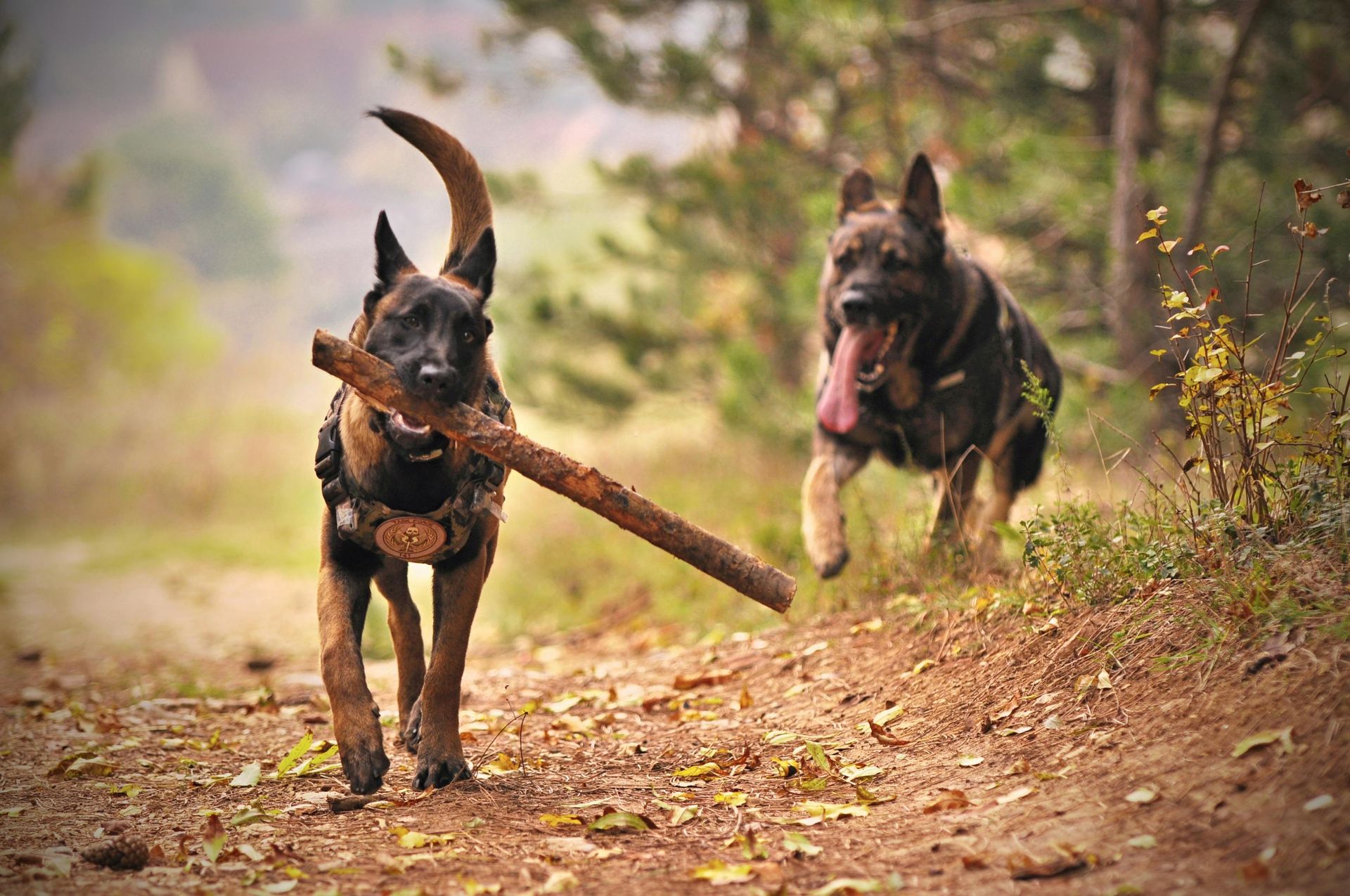Separation anxiety is a complex behavioral issue that affects many dogs. It can manifest in various ways and have significant impacts on both the dog's wellbeing and the owner's lifestyle.
How to Fix Dog Separation Anxiety And Help Your Pooch Relax
9 Powerful Tips That Can Reverse Dog Anxiety

Separation anxiety in dogs is a distressing condition that affects many beloved pets. It occurs when dogs become overly attached to their owners and experience extreme stress when left alone. This anxiety can stem from various factors, including changes in routine, traumatic experiences, or lack of early socialization.
Dogs with separation anxiety may exhibit destructive behaviors, excessive barking, and even physical symptoms of distress when left alone. These behaviors can be challenging for both the dog and the owner, but fortunately, there are several strategies that can help alleviate these symptoms.
Understanding the causes, symptoms, and treatment options for separation anxiety is crucial for creating a supportive environment for your furry companion. By implementing appropriate training techniques, considering medication when necessary, and exploring natural remedies, you can help your dog feel more relaxed and confident when you're away from home.
Understanding Separation Anxiety in Dogs
Causes of Pet Anxiety
Separation anxiety in dogs can stem from various factors.
- Changes in routine or environment often trigger this condition.
- Moving to a new home.
- Loss of a family member.
- Sudden schedule changes can all upset a dog's sense of security.
Past experiences play a crucial role. Dogs rescued from shelters or with a history of abandonment may be more prone to developing separation anxiety. Lack of proper socialization during puppyhood can also contribute.
Certain breeds may have a genetic predisposition to anxiety. However, any dog can develop separation anxiety regardless of breed or age.
Common Dog Anxiety Symptoms
Dogs with separation anxiety exhibit specific behaviors when left alone.
- Excessive barking, howling, or whining are common vocal signs.
These vocalizations often start as soon as the owner leaves or prepares to leave.
Destructive behavior is another key indicator, anxious dogs may:
- chew furniture
- scratch doors
- destroy household items
This behavior is often focused on exit points like windows and doors.
Changes in their attitude:
- depression and new tendency to withdraw
- refusing to eat
- not wanting to go for walks
- new aggression
- having "accidents" and other attention-getting behaviors
Physical symptoms can include;
- pacing
- trembling
- excessive drooling or dog nose dripping anxiety
Recognizing Panic Attacks
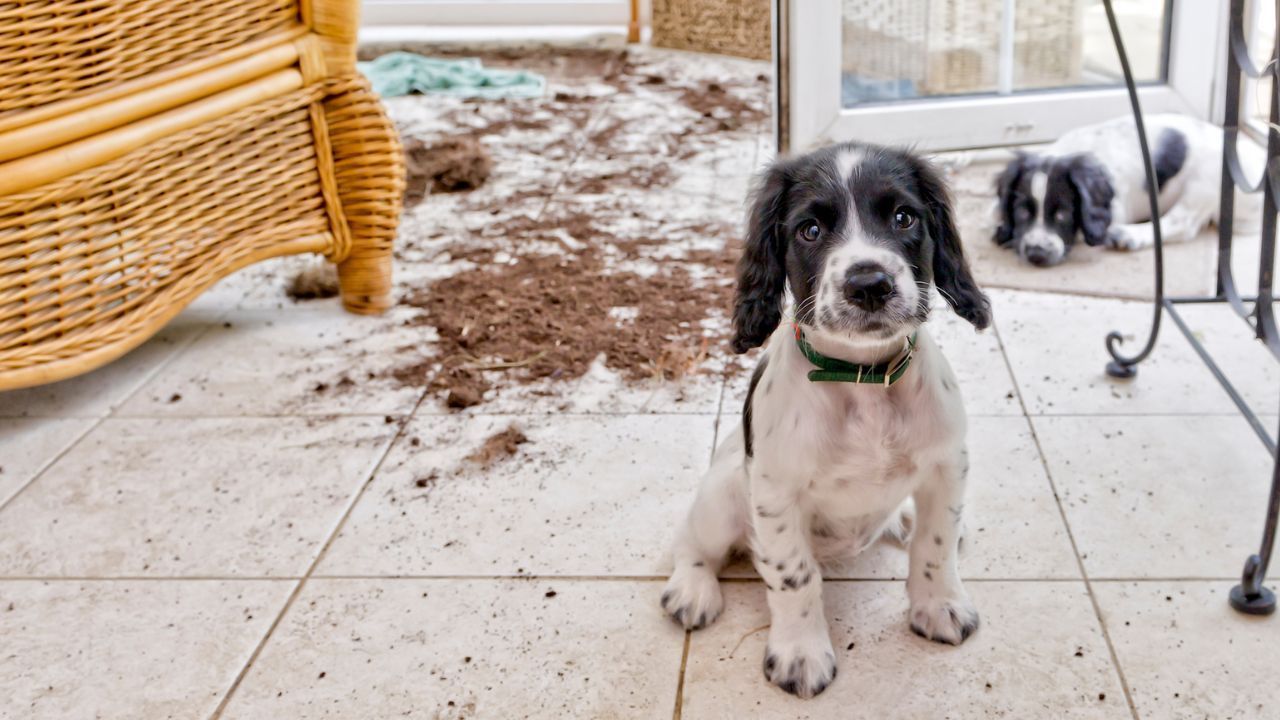
Behavioral Training Strategies That Prevent Separation Anxiety
Effective behavioral strategies and training techniques can significantly reduce separation anxiety in dogs. These approaches focus on building confidence, creating positive associations, and gradually increasing a dog's tolerance for being alone.
Importance of Routine and Consistency
- Establishing a consistent daily routine helps anxious dogs feel more secure.
Set regular times for meals, walks, play, and alone time. This predictability can reduce stress and uncertainty.
- Create a calm departure routine.
Avoid making a fuss or being overly excited when leaving or returning home. This helps normalize your absences and prevents your dog from becoming overly excited or anxious.
- Choose high quality, healthy food for your dog.
Choosing to feed your dog healthier food that is made with natural, whole ingredients will do more than encourage a longer life. As it is with humans, many of the cheap food ingredients designed to make food taste better and last longer can actually have detrimental effects on over all health.
Crate Training and Safe Spaces
Professional Training and Support
Gradual Desensitization Techniques
Desensitization involves slowly exposing your dog to low levels of separation, gradually increasing duration and distance. Start with very short absences, even just a few seconds.
- Practice "fake departures" by going through your leaving routine without actually leaving. This helps reduce your dog's anticipatory anxiety.
- Utilize counter-conditioning techniques by pairing your absence with positive experiences. For example, leave high-value treats or toys that are only available when you're gone.
Other Helpful Tips
- In-Home Monitors: Consider monitoring your dog's progress using cameras or audio recordings. This allows you to clearly see how they are coping and can be helpful when adjusting the training pace based on your dog's comfort level.
- Doggy Daycare: If you ever feel as though you have tried everything and are still not making progress, it might be worth looking into doggy daycare. Some dogs will never adjust well to being left alone and depending on the severity of their condition and retaliation this may be a great option, even if only for part of the time.
- Utilizing At-Home Vet Services: Taking your nervous dog for a car ride to a vet appointment in a clinic can put extra stress on your animal that can be very hard for them to manage. Having a
mobile vet come to your home instead is an excellent way to keep them relaxed which will result in a better check up overall.
9 Natural Remedies That Help Nervous DogsCope With Being Alone
Natural remedies and home-based solutions can effectively help manage your dog's separation anxiety. These approaches focus on creating a calming environment and providing engaging activities for your pet. It's very important to first consult your veterinarian or an animal behaviorist to verify that these methods are appropriate for your animal, and to rule out any potential underlying medical conditions that might be causing the anxiety.
1. Mental Stimulation With Enrichment Toys
Interactive and puzzle toys are excellent tools to keep your dog occupied and mentally stimulated while you're away. You can train your dog to love these clever toys while you're together and they will provide a long-lasting distraction. Training sessions and scent work can tire your dog mentally which makes them even more likely to relax.
2. Physical Exercise
Regular exercise is crucial for managing separation anxiety and a tired dog is more likely to relax when left alone. It can also help reduce stress by burning off excess energy and producing endorphins that can significantly improve a dog's mental state.
Before leaving, engage your dog in:
- A brisk walk or jog.
- A game of fetch.
- Agility exercises.
- Indoor hide and seek.
3. Sound Therapy
Creating a soothing environment can significantly reduce your dog's anxiety.
- Try a white noise machine to drown out other sounds.
- Soft, calming music has proven to be very effective with anxious dogs and there are playlists that are specifically designed for pets.
- Recorded sounds of nature like waves lapping on a shoreline, the sound of rain falling, leaves rustling in the wind can be helpful.
- Hearing a human voice reading a story or audiobook can help pets feel like they are not alone when you're out.
- There are soundtracks that have been specially designed with modified frequencies that dogs hear and like.
- Playing the sound of heartbeats in sound machines can be particularly effective for new puppies.
- Recording yourself humming or softly singing has also been shown to reassure your dog and strengthen your bond.
4. Aromatherapy For Dogs
Caution must be used to never apply essential oil directly on to any part of your dog's body and it is also a good idea to consult your vet trying these dog-safe essential oils:
- Chamomile
- Lavender
- Frankincense
- Valerian
- Sweet Marjoram
- Cedarwood
These essence oils can be used in various ways to produce a calming effect in dogs including:
- Pheromone diffusers usually plug into the wall and can be used to emit either essential oils, or a synthetic version of a pheromone which mimics calming dog pheromones.
- Pre-treated calming collars are also available and work in a similar way except that they are directly on your dog's body.
- Sprays can also be used and give you the added control over where to apply them, for example on a favorite pillow, blanket, doggie bed, or even on select toys. Make sure to dilute the essence oil before spraying.
- Incense can be burned in the home to simply fill the air with the fragrance.
5. Massage And Physical Contact
Just as it does with humans, physical contact helps us all release a stress-reducing hormone called oxytocin. Scheduling time before regular outings to give your pooch a gentle massage, a good brush down, or just general petting can be extremely helpful in putting them in a relaxed state just before you leave.
6. Calming Supplements
There are certain herbs and supplements that have been shown to be effective and are used in anti-anxiety products for pets:
- Melatonin
- Valerian Root
- L-theanine
- CBD Oil (without THC)
7. Behavioral Training
Working with a professional dog trainer or behaviorist can be a highly effective way for you and your dog to learn how to manage stress and anxiety. Using a technique like counter-conditioning can help change a negative response to something that is disliked, into a neutral or positive response by associating the "disliked thing" with a positive outcome. An effective way to make this switch is by pairing something enjoyable like treats or toys, together with the thing the dog dislikes.
8. Dog Anxiety Vest
Try using pressure therapy with a garment like the Thundershirt. It works the same way swaddling does for a baby, or a weighted blanket for a human. The constant, and gentle pressure produces a feeling of security and calmness and the Thundershirt is an adjustable garment that goes around the dog's torso. It's breathable and comfortable and many pet owners say they have seen significant improvements when using anxiety vests and the best thing is, it's a safe, drug-free tool that veterinarians and animal behaviorists often recommend for not only separation anxiety, but also thunderstorms, fireworks, travel, or other stressful events for your dog.
9. Dog-Friendly TV
DOGTV is a 24/7 channel that provides scientifically designed programming for dogs that keeps them company when they're at home alone. Years of research by top pet experts has gone into creating this special content that is made to stimulate your dog's visual and auditory senses to keep them entertained, calm, and relaxed while you're out.
The content has been divided into three categories:
- Relaxation to help reduce stress and stay relaxed with soothing sounds and music.
- Stimulation to keep the dog entertained and active using movements, animations, and exciting sounds that dogs like.
- Exposure to different day-to-day stimuli to help them manage and reduce stress when exposed to new, unfamiliar things.
Medical Interventions for Dog Anxiety
Veterinarians may recommend medical interventions to help dogs with severe separation anxiety. These can include prescription medications and over-the-counter options to reduce stress and promote calmness.
Prescription Medications
Veterinarians may prescribe anti-anxiety medications for dogs with severe separation anxiety.
Common options include:
- Fluoxetine (Prozac)
- Clomipramine (Clomicalm)
- Alprazolam (Xanax)
Over-the-Counter Solutions
Several over-the-counter options can help manage milder cases of separation anxiety:
- Pheromone products (e.g. Adaptil)
- Calming supplements containing ingredients like L-theanine or chamomile
- CBD oil (consult a vet first)
These solutions are generally considered safer with fewer side effects than prescription medications. However, they may not be strong enough for severe anxiety cases.
It's crucial to consult a veterinarian before starting any new medication or supplement regimen. They can provide guidance on the most appropriate options for your dog's specific situation and the correct dosage.
Understanding Dog Breeds and Anxiety Predispositions
Some dog breeds are more prone to developing anxiety disorders, including separation anxiety. This predisposition can stem from genetic factors, temperament, and historical breeding purposes.
Breeds that commonly experience anxiety include:
- Border Collies
- German Shepherds
- Labrador Retrievers
- Cocker Spaniels
- Bichon Frises
These breeds often have high intelligence and energy levels, which can contribute to their susceptibility to anxiety.
Factors that may influence a breed's predisposition to anxiety:
- Historical working roles.
- Socialization needs.
- Sensitivity to environmental changes.
It's important to note that individual dogs within a breed can vary greatly. Not all dogs of a predisposed breed will develop anxiety, and dogs of other breeds can still experience anxiety issues.
Separation-related disorders can significantly impact a dog's quality of life. Recognizing breed predispositions can help owners take proactive steps in preventing and managing anxiety.
- Proper training, socialization, and environmental enrichment are crucial for all dogs, especially those from anxiety-prone breeds.
- Regular exercise, mental stimulation, and positive reinforcement techniques can help reduce anxiety risks.
If you have a breed predisposed to anxiety, consult with your veterinarian or a professional dog trainer for tailored advice on preventing and managing anxiety-related behaviors.
Frequently Asked Questions
Separation anxiety in dogs is a complex issue that requires understanding and targeted approaches. Pet owners play a crucial role in managing and alleviating their dog's anxiety through various methods and treatments.
Is it possible to manage severe separation anxiety in dogs?
Yes but it requires a multi-faceted approach. Gradual desensitization is key, slowly increasing the time you're away. Providing engaging toys and creating a safe space can help your dog feel more secure when alone. Consider working with a professional dog trainer or behaviorist for tailored strategies. In some cases, medication prescribed by a veterinarian may be necessary to support behavioral modifications.
What role does a pet owner play in a dog's separation anxiety when they leave?
Pet owners significantly influence their dog's anxiety levels. Maintaining a calm demeanor when leaving and returning home is crucial. Avoid making a big fuss, as this can heighten your dog's emotional state. Establish a consistent routine for departures and create positive associations with your absence. Leave treats or puzzle toys to keep your dog occupied and associate your departure with positive experiences.
Are there natural home remedies that help reduce stress in dogs?
Several home remedies can help alleviate separation anxiety. Regular exercise before you leave can tire your dog out, promoting relaxation. Calming music or white noise can mask outside sounds and create a soothing environment. Essential oils like lavender or chamomile diffused in the air may have a calming effect. However, always consult with your vet before using any new remedies, as some may be harmful to dogs.
Is it possible to teach a dog how to cope with being alone?
Yes, there are new highly effective ways to lessen, and in some cases even switch off separation anxiety in dogs. The most effective training involves a known desensitization technique that has been shown to positively affect their behavior and we have created a proven reconditioning program that has been surprisingly beneficial in treating anxiety in pets.
The most effective training involves systematic desensitization and counterconditioning. Start with very short absences, gradually increasing duration as your dog becomes comfortable. Create positive associations with your departure cues, like picking up keys or putting on shoes. Reward calm behavior and independence. Consistency and patience are crucial for success.
Can the underlying cause of a dog's separation anxiety be determined and addressed?
In many cases yes it can. Common factors include lack of early socialization, traumatic experiences, or changes in routine. A thorough history and observation of the dog's behavior can help pinpoint potential causes. Addressing the root cause often involves a combination of environmental management, behavior modification, and sometimes medical intervention. Working with a veterinary behaviorist can be helpful in complex cases.
How can dogs with nighttime anxiety be helped to relax and sleep peacefully?
Establish a consistent bedtime routine to signal it's time to relax. Provide a comfortable, secure sleeping area away from windows or doors that might cause disturbances. Consider using calming aids like pheromone diffusers or anxiety wraps. Ensure your dog has plenty of exercise during the day to promote better sleep at night.
How can I tell if my dog is having an anxiety attack and can it be prevented?
Signs of an anxiety attack may include excessive panting, pacing, trembling, drooling, and destructive behavior. Some dogs may become overly clingy or attempt to escape. Prevention focuses on identifying and managing triggers. Gradual exposure to anxiety-inducing situations in a controlled manner can help build tolerance. Providing a safe space and using calming techniques can also prevent escalation.
Do some dogs outgrow separation anxiety, or will it be a lifelong condition?
While puppies may sometimes outgrow mild separation anxiety, it typically requires ongoing management in adult dogs. Consistent training and environmental management are usually necessary for long-term improvement. Some dogs may show significant progress with proper treatment, but maintaining learned coping skills is important to prevent relapse.
Are there any dog anxiety medications that are safe and effective to use?
Several medications can be effective for managing canine anxiety. These include SSRIs like fluoxetine, TCAs like clomipramine, and benzodiazepines for acute anxiety. Always consult a veterinarian for appropriate medication choices and dosage. These drugs should be used in conjunction with behavior modification for best results.
What natural remedies show promise in treating canine anxiety without resorting to pharmaceuticals?
Natural remedies like CBD oil, L-theanine supplements, and herbal blends containing valerian or chamomile have shown promise in reducing anxiety in some dogs. Pheromone products like Adaptil can also help create a calming environment. It's important to note that natural doesn't always mean safe. Always consult with a veterinarian before starting any new treatment regimen.
Can acupuncture really help control dog anxiety?
The short answer is yes, it can help with a wide spectrum of behavioral and physical issues. Acupuncture promotes relaxation by triggering the release of endorphins, it may help the mood by regulating neurotransmitters like serotonin and dopamine, and it is also known to help circulation which can lead to overall improved well-being. It's important to note that acupuncture is normally used in conjunction with other treatments to form a holistic, broader approach to managing canine anxiety. It is also critical that a certified professional is used, such as a veterinary acupuncturist.
Best wishes, from Cape Coral Mobile Vet in Florida
Ready to work with Cape Coral Mobile Vet?
Let's connect! We’re here to help.
Send us a message and we’ll be in touch.
Or give us a call today at (239) 323-4234


